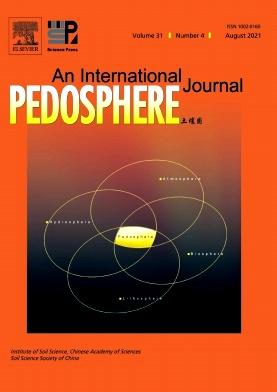根系渗出物驱动的植物生长促进根瘤菌根瘤层招募
IF 7.3
2区 农林科学
Q1 SOIL SCIENCE
引用次数: 0
摘要
为了促进生长,陆生植物通过根系将光合产物以根分泌物的形式释放到根际。在根分泌物的吸引下,促进植物生长的根瘤菌(PGPR)在根际定殖,刺激植物生长和/或抑制病原微生物的生长。PGPR的根际募集,以及根与微生物相互作用的建立,是通过对根渗出物的趋化而启动的。在过去的几十年里,科学家们在确定根分泌物中具有代表性的化学效应物以及相应的化学受体方面取得了显著的进展。本文综述了根际趋化研究的最新进展,特别是根分泌物中的趋化效应物,PGPR甲基化趋化蛋白的结构和功能特征,以及根际趋化对根定植、生物膜形成和其他根-微生物在招募过程中的相互作用的影响。最后,我们提出了几个观点,旨在充分释放PGPR作为可持续农业生物接种剂的潜力。本文章由计算机程序翻译,如有差异,请以英文原文为准。
Root exudate-driven rhizospheric recruitment of plant growth-promoting rhizobacteria
To promote growth, terrestrial plants release photosynthetic products into the rhizosphere in the form of root exudates through their root systems. Under the attraction of root exudates, plant growth-promoting rhizobacteria (PGPR) colonize the rhizosphere to stimulate plant growth and/or suppress the growth of pathogenic microorganisms. The rhizospheric recruitment of PGPR, as well as the establishment of root-microbe interactions, is initiated by chemotaxis towards root exudates. Over the past several decades, scientists have made notable strides in identifying representative chemoeffectors in root exudates, as well as the corresponding chemoreceptors. We review here the most recent developments in rhizospheric chemotaxis, particularly the chemoeffectors in root exudates, the structural and functional characterization of methyl-accepting chemotaxis proteins of PGPR, and the impacts of rhizospheric chemotaxis on root colonization, biofilm formation, and other root-microbe interactions during recruitment. Finally, we propose several perspectives that aim to fully unlock the potential of PGPR as bioinoculants in sustainable agriculture.
求助全文
通过发布文献求助,成功后即可免费获取论文全文。
去求助
来源期刊

Pedosphere
环境科学-土壤科学
CiteScore
11.70
自引率
1.80%
发文量
147
审稿时长
5.0 months
期刊介绍:
PEDOSPHERE—a peer-reviewed international journal published bimonthly in English—welcomes submissions from scientists around the world under a broad scope of topics relevant to timely, high quality original research findings, especially up-to-date achievements and advances in the entire field of soil science studies dealing with environmental science, ecology, agriculture, bioscience, geoscience, forestry, etc. It publishes mainly original research articles as well as some reviews, mini reviews, short communications and special issues.
 求助内容:
求助内容: 应助结果提醒方式:
应助结果提醒方式:


